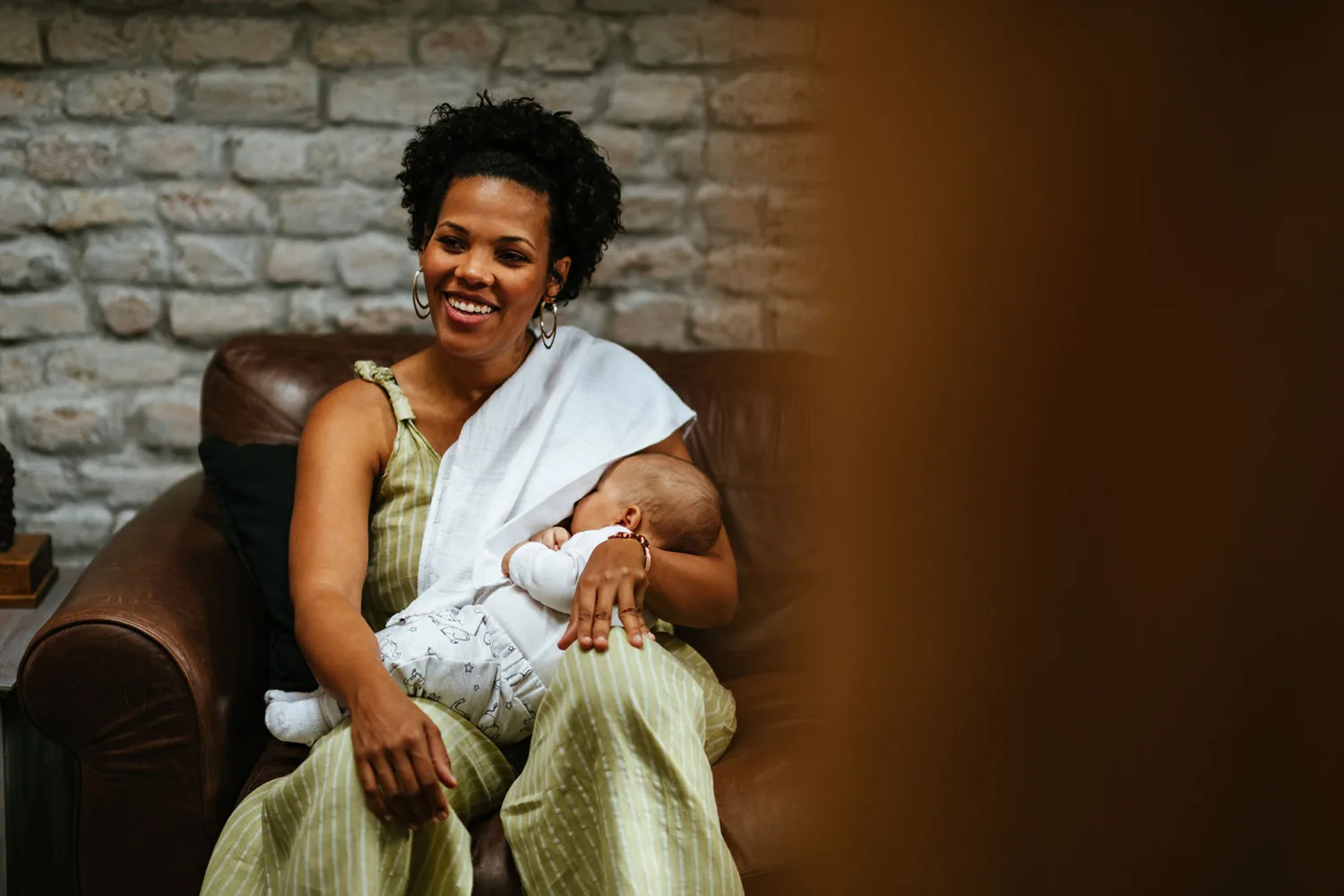As you prepare to welcome a new baby, you probably have questions, especially when it comes to feeding and nourishment. If you’ve done any research, you’ve probably heard about “responsive feeding” and wondered what it’s all about. We’re here to give you the rundown on experts’ most recommended feeding approach and help you figure out whether it could be right for you and your baby.
What is responsive feeding?
Responsive feeding is a bit like the infant and child version of intuitive eating, which is about trusting yourself to make choices that are right for you and learning your body’s cues for hunger and satiety. In responsive feeding, the caregiver pays close attention to learn baby’s cues about when they are hungry, how much to eat, and when it’s time to stop. Experts describe responsive feeding as a “reciprocal” process, meaning that baby and mama work together so that baby’s needs are met. Responsive feeding supports baby in learning self-regulation around food, and it also strengthens the caregiver-child bond, because baby learns they can count on a prompt and predictable response to their needs.
How is responsive feeding a “reciprocal” process?
On first account, it may sound like responsive feeding means letting a baby or toddler eat whatever they want, or anytime. But responsive feeding encompasses much more than that. It also involves providing healthy food, responding promptly to your child’s cues, and making mealtime a calm and predictable occasion. It also recognizes that most babies are paying just as much attention to their caregivers’ cues, meaning there’s a lot caregivers can do to make mealtime a joyful and positive experience rather than a battle.

What’s the alternative to responsive feeding?
When it comes to infants, the alternative to responsive feeding is called paced bottle feeding. This is when the caregiver controls the pace of feeding as well as when the feeding session begins and ends. For toddlers and young children, non-responsive feeding may mean forcing your child to finish everything on their plate, allowing them to control the feeding, or using food as a reward or punishment.
Isn’t responsive feeding just for mamas who breastfeed?
The responsive feeding approach can be used whether your baby is breastfeeding, bottle feeding, or starting to explore solid foods. While feeding may look a little different at each developmental stage, the through line is to pay attention to your child’s cues, promptly respond to their needs, and set healthy boundaries that make sense for your child’s stage in life. As baby begins eating solid foods, responsive feeding becomes about trusting your child and honoring their preferences, not controlling meals or mealtime (for example, forcing them to finish their food) and making eating a positive experience. The ultimate goal is that the child will enjoy food, eat a well-balanced and diverse diet, and trust themselves to know their internal cues of hunger and fullness.
How do I practice responsive feeding with freeze-dried breast milk?
Whether you’re feeding baby from the bottle or the breast, you’ll find that responsive feeding practices look pretty similar. You’ll want to learn baby’s signals for hunger and fullness, to start, and position them so that they, not you, are in control of the flow of milk. Throughout the process, whoever is doing the feeding should engage with baby and allow them to lead the way, watching closely for cues that they are finished and not forcing them to take the entire bottle.

Can I trust the responsive feeding method?
Many experts recommend responsive feeding, including the American Academy of Pediatrics and Harvard Medical School. Research shows that responsive feeding can help children develop a healthy relationship with food, prevent obesity, and create a positive bond between caregivers and children.
How do I know if my baby is hungry?
As a new parent, you’ll become intimately familiar with your baby’s signals, cries and cues. A baby that’s hungry may grab at the breast, make sucking noises, or bring their hands towards their mouth. Crying is usually a last resort, happening only after the baby’s other cues have been missed.
How do I know when my baby is full?
When your baby is done, he may unlatch, start and stop, turn away his head, or even fall asleep.
What are the challenges of using the responsive feeding approach?
Although it sounds like a great idea and indeed can offer many benefits for you and your baby, responsive feeding isn’t always easy. For example, you’ll want your baby to eat only when they are hungry, which means that you’ll have to find other ways to soothe your baby when they are unsettled but not showing signs of hunger. It can also be challenging to feed infants whenever they are hungry rather than putting them on a predictable schedule that might be easier on Mama and other caregivers. But in the long run, experts want mamas to know that responsive feeding is worth it.
Want to learn more about how Bébé Bru can support you in nurturing your baby with YOUR breast milk no matter what kind of lifestyle you lead? Read about our incredible process at TheBebeBru.com.


